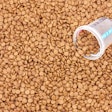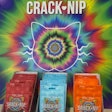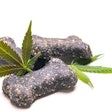
One reason the pet food industry is so dynamic is that it thrives on innovation — and not just through development of new pet food and treat products. (Some in the field would argue that truly innovative new products are few and far between anyway.)
Innovation in pet food takes many forms and appearances. For example, with a new pilot pet food lab at its headquarters in Des Moines, Iowa, USA, Kemin Nutrisurance is leaning into the growing prominence of wet pet food in the market, offering a way to research ingredients, palatants and other materials in retorted products (soon adding those in pouches, trays and other types of packaging).
And that research opportunity is not just for internal Kemin scientists and product developers; the company is also hoping to attract clients — pet food manufacturers — to “co-create” at the new lab under a new offering called Research and Exploration Services. “We hope to have 50% of the work done in the lab be for customers,” said Jason Shelton, global vice president of R&D for Kemin Nutrisurance.
“The wet pet food pilot lab is a key feature of Kemin Nutrisurance’s leading approach to research, development and service, allowing the business unit and its customers to create, test and validate pet food and treats, including kibble and wet retort products to help better predict large-scale results,” reads a company press release. “The state-of-the-art facility has more production capacity and testing capabilities than most R&D labs, but with the flexibility of a smaller scale.”
(The company also has labs and innovation centers for other research purposes in other locations worldwide, including Italy, Brazil and China.)
Short- and long-term pet food research
As the press release alludes, the lab is also designed as a research facility for coating and spray drying kibble. In fact, its large spray dryer is pioneering this type of research for the company overall, which is now using it in its human food applications, according to company representatives.
Alberto Munoz, general manager for Nutrisurance North America, explained that larger pet food companies may not have the production capacity to do wet pet food research looking three years out or so, while smaller companies may not have the internal capability for such research at all. That’s where the lab would come in.
Another innovation is coming from a part of the business Kemin calls its applications services: It is offering dosing equipment, mainly to pet food renderers, that allows clients to automatically dose antioxidants. Through a service called Kemin Connect, the equipment is connected to the Cloud to allow for real-time notifications of any issues, allowing operators to make quick adjustments as needed, Munoz said.
Shelton said his research team also is undertaking longer-term discovery studies, looking at intestinal health (such as through synbiotics); new antioxidant molecules, using decades worth of the company’s data to mine for application ideas; and new ingredient formulations for palatants, especially for cats and to incorporate more sustainable materials.
Pet food ingredient innovation riding a wave
Of course, Kemin is just one company — on both the supply side and manufacturing side of pet food —doing research on intestinal health, especially in studying the dog and cat gut microbiome to learn how they work and can help deliver better nutrition to pets. (Same for other types of microbiomes, and same for us humans in terms of our microbiomes.)
Innovations in other types of pet food ingredients are coming to light continually. In June 2023, BioCraft Pet Nutrition (formerly Because Animals) introduced a cell-cultured chicken slurry for use in dog and cat food. And that’s only one example of “lab grown” or cultured protein applications under research. Wild Earth, which currently offers plant-based pet foods and treats, says it’s developing ones with cell-based proteins, too. (Watch for an article in the August 2023 issue of Petfood Industry.)
In late March 2023, Sensient Technologies announced the launch of its Vertafine natural green colorant for pet foods; the company said the development was the first to offer a natural source of green that adheres to Association of American Feed Control Officials standards while also being able to withstand high-heat pet food processing.
This is a quick list of such innovations hitting the market; no doubt more are on the horizon, and more on the finished product side will make their debut at Superzoo in August and other shows internationally (such as Pet Fair South East Asia, coming in October in Bangkok). Together, they comprise the juice that keep the industry thriving and growing.

















